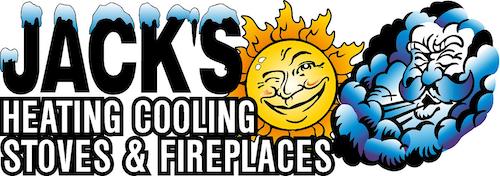Everyone’s always looking to save money on their utility bills, but it just so happens there’s a way to lower energy use, even when you’re not even home.
It starts with your thermostat. By making the most out of your thermostat, you can tailor the temperature to your needs. That means you can have different temperature settings for when you’re at home, away or even when you’re sleeping.
If you’re willing to make these adjustments, you’ll be able to enjoy comfortable temperatures while keeping more money in your pocket. Check out our guide on how your thermostat can be a source of energy savings:
While at Home
Whenever you’re at home, you want comfortable temperatures. That’s why it’s best to set your thermostat lower in the summer while you are in the house to appreciate the cool air.
But in terms of energy efficiency, the best range for the summer is actually around 78 and 80 degrees Fahrenheit. With this adjustment, you can stay cool while still lowering your monthly energy bill.
While Out of the House
When setting the temperature for a vacation or other trip away from the house, the majority of homeowners will set the thermostat higher for while they’re gone.
If your home is in a shady spot in a cooler climate, you can set the temperature as high as 88 degrees while no one is home before you adjust it back to the sweet spot of 78-80 degrees after you return. This way, your air conditioning system isn’t working around the clock to cool an empty house.
While Sleeping
For a full night’s rest during summer weather, you want your thermostat set at a comfortable temperature. A good rule of thumb is between 68-72 degrees Fahrenheit. There’s less risk of getting too hot or too cold at some point overnight.
Other Ways to Use Less Energy:
- Smart thermostat installation: Switching to a smart thermostat in the summer helps save money on energy costs since it can plan your temperature adjustments according to your lifestyle and idea of what comfortable is. They can lower the temperature while you are home or sleeping, while allowing it to get warmer when no one is around. Using reputed brands and models such as the Lennox iComfort, you have the ability to remotely access and change the temperature through your smartphone, tablet or laptop. Requesting smart thermostat installation in your Alliance home can be the simplest strategy for maintaining comfortable, yet energy-efficient temperatures no matter where you are.
- Replace current equipment with a newer HVAC system: A new HVAC system can save money in the long run. By investing in a more energy-efficient system, your utility bills will be lower because it requires less energy to achieve comfortable temperatures. Air conditioning installation in Alliance is a great way to beat the heat in the summer.
- Keep up with AC maintenance: Investing in or ignoring regular air conditioning maintenance in Alliance can have a significant impact on your utility bills. With regular cleaning of the coils, checking for damage and clearing ventilation of dust and debris, you may notice your HVAC system run more efficiently. Higher energy efficiency will also reduce strain on the unit and lowers operational costs, lowering total energy use and eventually the total monthly bill.
- Clean or replace the air filter on a regular basis: A regular schedule for cleaning or replacing the HVAC system’s air filter saves money by improving airflow. When filters are old and less effective, an AC unit has to work harder, and the strain can reduce the system’s life span and cause breakdowns.
- Verify your attic has enough insulation: Insulation is a crucial component for any energy-efficient home, securing the hot air outside and the cool air inside during the summer. The North American Insulation Manufacturers Association (NAIMA) suggests that homeowners living in southern climates should install at least 13-14 inches of insulation, while those in northern U.S. states should have 16-18 inches.
- Review your air ducts: A leak in the air ducts could increase your energy bills much more than 20 percent, plus it can potentially allow harmful emissions from your water heater, clothes dryer and other appliances throughout your home. Finding any leaks fast and sealing them can fix both of those problems.
- Seal all other leaky spots in your home: Sealing up other leaks in your home with caulk, foam sealant or weather-stripping keeps temperatures a little cooler on hot summer days. Don’t forget to check for any gaps around windows, doors and even outdoor fixtures. Taking the time to seal up any leaks now can help you save a lot over time.
